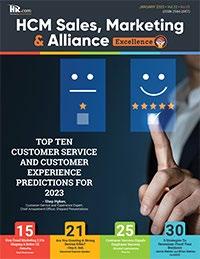






4 tips to manage vacation requests effectively
- Kiljon Shukullari, HR Advice Manager, Peninsula Canada
What you need to know as the May 2023 reporting deadline fast approaches
- Lynne Anne Anderson, Partner and Sylvia Bokyung St. Clair, Associate, Faegre Drinker
Tips To Better Manage Your Work-From-Home Teams
Expert advice about remote workforce challenges – and how to overcome them

- Monica Foster and Heather Johnson, Managing Director, Focus Search Partners
7 Ways To Turn Employee Schedules Into A Hiring And Retention Asset



Optimize employee scheduling with 7 practices for improved engagement, productivity, and retention
- Jim McGeady, Senior Director of Product Marketing, ADP
This monthly interactive learning experience showcases activities, processes, and tools needed to manage a workforce.
Virtual Events in the Workforce Management encompasses all the activities, processes, and tools needed to manage a workforce. A comprehensive WFM system includes planning, forecasting, scheduling, and tracking workers to optimize the balance of customer, employee, labour laws and organizational needs. Be informed and understand the latest WFM trends through Workforce Management Virtual Events. Each Virtual Event consists of up to 10 credit webcasts.

HR.com webcasts deliver the latest Workforce Management industry news, research trends, best practices and case studies directly to your desktop. Webcasts are available live online with a downloadable podcast and a copy of the slides (PDF) available before and after each webcast. Earn all of the required recertification credits for aPHR, PHR, SPHR, GPHR, and SHRM Certifications. HR.com’s one-hour webcasts, in every HR specialty including HRIS and Payroll, are pre-approved for HRCI and SHRM credit (excluding Demo webcasts).
Join almost 21,700 HR.com members with a similar interest and focus on rewards and recognition. Share content and download research reports, blogs, and articles, network, and “follow” peers and have them “follow” you in a social network platform to communicate regularly and stay on top of the latest updates. This well established Workforce Management Community is an invaluable resource for any HR professional or manager.
Editorial Purpose
Our mission is to promote personal and professional development based on constructive values, sound ethics, and timeless principles.
Excellence Publications
Debbie McGrath CEO, HR.com - Publisher
Sue Kelley Director (Product, Marketing, and Research)
Babitha Balakrishnan and Deepa Damodaran Excellence Publications Managers and Editors
Deepak S Senior - Design and Layout
Workforce Management, Time & Attendance, Excellence Team

Deepa Damodaran, Editor
Nataraj Ramesh Design and Layout (Digital Magazine)
Chandra Shekar Magazine (Online Version)
Submissions & Correspondence
Please send any correspondence, articles, letters to the editor, and requests to reprint, republish, or excerpt articles to ePubEditors@hr.com
For customer service, or information on products and services, call 1-877-472-6648
Workforce Management, Time & Attendance, Excellence (ISSN 2564-2006)
is published monthly by HR.com Limited, 56 Malone Road, Jacksons Point, Ontario L0E 1L0
Internet Address: www.hr.com
Debbie Mcgrath Publisher, HR.comIn2023, companies are faced with several challenges when it comes to employee scheduling. However, there are several strategies that businesses can implement to engage and retain their workforce, such as creating a comprehensive leave policy that supports employees in balancing their personal and professional lives.
A company's leave policy is a crucial aspect of its culture, as it reflects how much it values and respects its employees. Organizations may have varying policies, including flexible leave options, employee autonomy in scheduling leaves, and leave-sharing programs.
In this issue, we feature articles by Brett Farmiloe, Founder and CEO of Terkel.io, who shares 11 Employee Leave Policy Best Practices. Kiljon Shukullari, HR Advice Manager at Peninsula Canada, discusses How To Handle The Surge Of Vacation Requests.
Deepa Damodaran Editor, Workforce Management, Time & Attendance, Excellence
Scott Day, Chief People Officer at Alludo, explores what True Flexibility At Work means in the post-pandemic world.
Additionally, in SB 1162: CA Pay Data Reporting For Workers, attorneys Lynne Anne Anderson and Sylvia Bokyung St. Clair from Faegre Drinker discuss the changes in Senate Bill 1162 and what employers must do to comply with the new requirements.
This issue also includes several other informative articles on workforce management and time and attendance that we hope will assist you in achieving excellence and efficiency in your workforce management efforts.
Happy reading!
Strategies businesses can implement to engage and retain workforce
In a world of unparalleled challenges (global pandemic, racial injustice, political rivalry, digital 4.0, emotional malaise), uncertainty reigns. Finding opportunity in this context requires harnessing uncertainty and harnessing starts with reliable, valid, timely, and useful information. The Excellence publications are a superb source of such information. The authors provide insights with impact that will guide thought and action.
Dave Ulrich
Excellence publications are my ‘go-to’ resource for contemporary and actionable information to improve leadership, engagement, results, and retention. Each edition offers rich and diverse perspectives for improving the employee experience and the workplace in general.

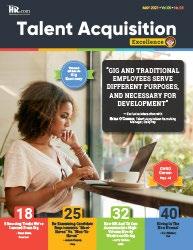
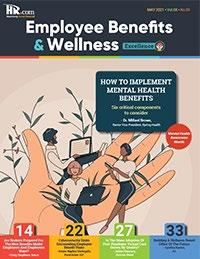
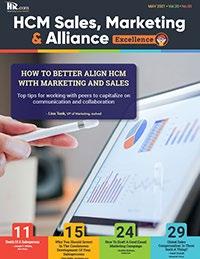


 Julie Winkle Giulioni Author, Virtual /Live Keynote Presenter, Inc.’s Top 100 Leadership Speakers
Julie Winkle Giulioni Author, Virtual /Live Keynote Presenter, Inc.’s Top 100 Leadership Speakers


I regularly read and contribute to Leadership Excellence and Talent Management Excellence. I use many of the articles I read to augment my own presentations and I often share the articles with my clients. They are always quick, right on target for the latest issues in my field, and appreciated by my clients. If you want to stay up to date on the latest HR trends, choose a few of the different issues from the Excellence series of publications.


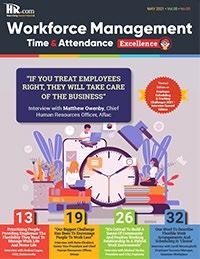
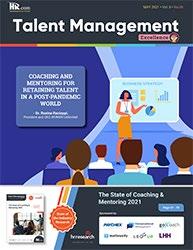
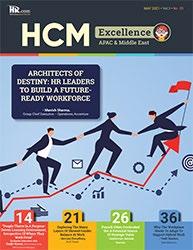
We’re eager to hear your feedback on our magazines. Let us know your thoughts at ePubEditors@hr.com
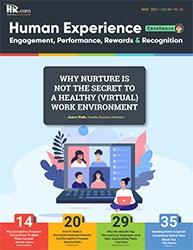 Rensis Likert Professor, Ross School of Business, University of Michigan Partner, The RBL Group
Rensis Likert Professor, Ross School of Business, University of Michigan Partner, The RBL Group
 By Brett Farmiloe, Terkel.io
By Brett Farmiloe, Terkel.io
From ensuring minimum staffing requirements to creating a centralized employee portal, here are 11 answers to the question, "What are some best practices you use for employee leave policies?"
● Ensure Minimum Staffing Requirements
● Give Employees More Autonomy to Schedule Leave
● Implement a “No Questions Asked" Policy
● Regularly Review and Update Employee Leave Policies
● Provide Flexible Employee Leave Policies
● Use Software to Speed Up Approvals
● Outline The Types of Leave Offered and How They Work
● Include Paid Personal Days
● Subscribe to Get Instant Updates On Compliance Changes
● Implement a “Leave Sharing” Policy
● Create a Centralized Employee Request Portal
One of the most important practices we have developed is to encourage our employees to schedule their longer vacations in advance so we can ensure the minimum required staff is present at any point. This practice is highly visible in our content team since we need to continuously publish new content, which cannot be done if all our writers and editors take their vacation simultaneously.
At the beginning of every year, everyone gives their managers their preferred vacation dates which we then compare and schedule accordingly. That way, we are making sure that content production never stops and that we can always meet our targets.
Gordana Sretenovic, Co-founder, Workello
One strategy that we are using for our health and wellness start-up as far as leave policies go is to give our employees more autonomy to schedule their own leave days.
We believe that our employees understand their scheduling better and, of course, their needs as well. They, therefore, need to have a much bigger say on how leaves are scheduled, how they are executed, and some of the eligibility criteria required to standardize them across all departments.
This is why our HR team always pursues a collaborative approach by encouraging open feedback from the team. We are also promoting proper communication about possible changes in leave policies as well.
As a fully remote and digital company, we implemented a "No Questions Asked" policy. This means that employees are allowed to take unplanned time off without being required to provide a reason for their absence. This policy can help to build trust between employees and the company, while also promoting a culture of flexibility and work-life balance.
By allowing employees to take unplanned time off without requiring a reason, the company is demonstrating a level of trust in its employees. This can lead to increased employee engagement and loyalty, as well as a more positive workplace culture. In addition, this policy can help to reduce stress and burnout, as employees are not required to come up with an explanation for their absence or feel guilty about taking time off. Of course, this policy should be accompanied by clear guidelines for how much time off is allowed and what the process is for requesting it.
Erik Pham, CEO, Health Canal

Regularly review and update your employee leave policies to ensure they remain relevant and in line with changing laws and business needs. Part of this review process is to check for any new or updated legislation, as federal and state laws related to employee leave can change frequently.
Since business needs can change over time, regularly reviewing your leave policy ensures it is still responsive to the needs of the company and its employees. Examples include needing more flexible leave options to accommodate remote workers or providing additional support for employees caring for family members.
These changes are in response to the pandemic's new working environment. Employees and managers can give feedback to help identify areas needing updating, such as clearer guidelines for when employees should take leave or providing additional support for employees returning from leave.
Peter Hoopis, Owner and CEO, Peter Hoopis
Providing generous and flexible employee leave policies is essential for cultivating an engaged and productive workforce. One best practice we use is to create transparent leave policies that are easily accessible by both managers and employees. This ensures that everyone is aware of the company's guidelines regarding vacation time, personal days, parental leave, and other types of leave.
We encourage communication between managers and employees regarding planned time off and make sure there is clear guidance on the process for requesting leave. By following this best practice, businesses can ensure their employees feel respected and supported, while also promoting a healthy work-life balance.
More employees demand better work flexibility, and your leave policies should reflect that. Your employee leave policy must be easily actionable, which is where leave management software comes in handy. The entire process can get messy and time-consuming for HR between last-minute requests, ping-ponging emails, and manual compliance checks. Both management and employees will get frustrated by delays leading to missed time off or costly compliance mistakes.
Use automated software to help manage leave policies and speed up the approval process. As a result, your business can offer the team as much flexibility and adequate time off as possible without weighing HR down with another lengthy, frustrating task.
Tawanda Johnson, HR and DEI Consultant, Sporting Smiles

An effective best practice for employee leave policies is to clearly outline what types of leave are offered. This includes vacation, parental, bereavement, jury duty, and sick days. Additionally, businesses should describe how each type of leave works into a larger paid time off policy.
For example, many companies have introduced wellness leaves as part of their policy as an uncommon way to promote employee health. This encourages workers to take days off for restorative activities, such as exercise, meditation, or volunteering in the community - all of which can result in increased productivity when they return to work.
By including wellness leaves among its employee leave policies, a business supports both physical and mental health among its workforce while still ensuring adherence to obligatory regulations.
Grace He, People and Culture Director, teambuilding.com
If you are going to offer any kind of leave, the first thing to do is make sure it is paid. Personal days are a great way for employees to take stress days, personal errand days, or duvet days without the need to claim they are ill. It is a nice way to add extra days off without putting any onus on the situation; however, we do not allow for personal days to be added onto holidays nor do we allow more than one personal day to be taken at a time.

While most labor law changes go into effect on January 1 of the following year after approval, they can be updated at any time at the state, city, and county levels. Ensure you are regularly watching labor law websites and revisiting your leave policies quarterly to ensure they are always in compliance with new laws.
Jarir Mallah, HR Specialist, Ling AppThe U.S. Department of Labor offers a free subscription service, allowing business leaders to receive email alerts to notify them of newly available information. Let these notifications guide you to proactively change policies, so you can have them ready to release well ahead of your legal deadline.
Tory Gray, CEO and Founder, The Gray Dot Company

At our company, we implemented what's called the "Leave Sharing" policy. This policy allows our employees to pool and share their accrued paid time off with other employees that might need it.
On top of our holiday policy, all employees are entitled to a total of 14 days of paid leave per year. If an employee fails to use all of his or her paid time off in a year, he or she is entitled to half of it the following year. This allows entitled PTO to accrue over time. To maximize the benefits of stockpiling leave time, we decided to allow our workforce to share it amongst themselves.
For instance, if one employee badly needs time off but does not have enough accrued PTO, another employee can share his or her own PTO with them. Of course, there are other policies that should be followed for a leave share to be approved. Nonetheless, we think that this is a good policy that could increase camaraderie and collaboration. It also helps foster a sense of community within our workforce.
Jonathan Merry, Founder, MoneyzineCreate a centralized portal for leave requests through a leave-management tool. It can be overwhelming to manage multiple leave requests simultaneously, and it is easy to lose information when you do it manually. Leave-management software allows you to consolidate requests, categorize them by type, and make necessary workflow adjustments. It helps you handle, approve, or reject employee leaves on time and maintain operations. A centralized portal makes it accessible and convenient for employees to put in their requests from the get-go. It encourages them to respect the company's leave policy without worrying about workplace concerns in the future
Grant Polachek, Head of Branding, SquadHelpBrett Farmiloe is the Founder and CEO – and currently CHRO - of Terkel.io . Brett is an SHRM Influencer and has also been a keynote speaker at several state SHRM conferences around the topic of employee engagement."


Would you like to comment?

You’veprobably been hearing a lot about four-day work weeks recently. And it may sound very appealing.
Believe me, I get it. The pandemic blurred the lines between work and life like never before. And as businesses try to figure out what work looks like now, knowledge workers are struggling with long hours, not to mention bosses that are trying to force them back into the office. People are reporting more stress. They are wishing they could regain their time, prioritize their lives, work where they feel most productive, and frankly, set better boundaries.
So, when we hear about the mandated four-day work-week, many of us think: “Hmm... maybe that’s it.”
But here's the plot twist: As a people leader, I have given this a lot of thought. I am not convinced we will fix this problem by forcing knowledge workers to work four days instead of five.
And it is not for the reason you think.
It’s not because I think productivity will drop.
It’s not because I think employees will disengage.
It’s not because I can’t make it make financial sense.
It’s not because I am a tyrant who loves to see people glued to their office chairs.
It’s because it’s not enough freedom.
The four-day workweek is still an employer-prescribed, top-down methodology that is too focused on input (hours spent in the chair) versus output. It still fails to see people as unique individuals and treats us all as if we have the same needs, preferences, and demands. While I certainly agree that a four-day workweek might be perfect for some people, I’m an even bigger believer in freedom. I honestly don’t think the times, days, and hours you work – never mind where you work – should be dictated by the company you work for at all.
True flexibility at work. And that means working wherever, however, and whenever you want. The best employers focus on
outcomes, not inputs. They want to know if you are getting your job done and doing it well. They couldn’t care less whether you prefer to wake up at the crack of dawn and hit the ground running, or spend the day with your family and focus on work at night.
Flexibility and freedom at work do not mean leaving work early to watch your kid’s soccer game. It means that watching a soccer game in the middle of the day isn’t “leaving early” at all.
Sure, there are times when the team will need to align schedules for a meeting or a deadline. But that noon meeting might be the beginning of the day for some and the end for others. It might be a quick moment of work to focus on an otherwise non-work day. And if you have a global workforce, flawless alignment on work timing is not realistic anyway.
This is not just about making a more welcoming workplace for employees, though that is a big part of it. It is also a smart business.
I have found that freedom and flexibility are not only great for people, but also for our company. During the pandemic, knowledge workers everywhere proved that productivity did not require an office. And it goes without saying that work/life balance can be dramatically improved by removing the artificial constraints of “industrial-era” 9-5 office work. When the focus is on results instead of counting people sitting in cubicles, employees discovered they could make more space not only for their lives and families but also for their careers.
Yes, a four-day workweek might work great for some. Maybe you think it is perfect for you and your life. And if you do, you

should have the right to ask your employer for it. But if you are considering implementing it at your company (or already have), please think twice before making it mandatory and dictating the specific day people need to take off.
Don’t hop on the trend because it sounds enticing when it is just the same old archaic work structure in different clothing. Challenge yourself to explore what true freedom and flexibility at work would look like.
Different roles and businesses come with a variety of requirements, and of course, I cannot speak universally. For many workers, set hours and locations are absolutely necessary. (Thank you, first
responders and frontline workers who turn up every day when and where we need you!) But for knowledge work – where outputs mean so much more than time or location – I encourage leaders to embrace a philosophy that puts the individual first.
True flexibility and freedom means treating employees like whole people who should be able to make their own choices. We should be measuring productivity by results, not days of the week or hours at a computer.
Scott Day is the Chief People Officer of Alludo. He lives by a people-first philosophy that emphasizes freedom and connection to build supportive and high-performing teams. Scott has a passion for driving organizational change, shaping culture, and delivering business results in fast-paced, collaborative environments. He’s played a pivotal role in spearheading Alludo’s remote-first transformation and creating an environment that embraces employee well-being with ERGs (Employee Resource Groups), great benefits, wellness days off, and more.
Would you like to comment?

4 tips to manage vacation requests effectively
By Kiljon Shukullari, Peninsula CanadaHere are four ways team managers can handle the surge of vacation requests.
Having a shared holiday calendar that is accessible to all staff can help avoid any vacation clashes. Staff
can easily check availability before blocking dates. It would also be useful for employers to highlight blackout period dates, where no one can book time off.

A policy informing staff about vacation requests will help make it a clear process for everyone. It also helps to demonstrate transparency and fairness to all employees by explaining the rules upfront.
Examples of what employers can include in the policy include how far in advance staff must book a vacation or how many employees can book time off at the same time.
It is important to note, that not all vacation requests can be accepted, some will be declined. Some reasons may include a busy holiday season or staff shortages. Employers should make it clear in the policy or employee handbook of such rules.
Although a “first come, first served” policy will help to make managing vacation requests easier, it could also cause issues if not done properly.

There are certain holidays, such as Christmas, where many staff would want to take leave. To
avoid a surge in requests for the same dates, employers can come up with creative ways to divide popular holidays/days. For example, employers can implement a rotational system where everyone can take turns taking time off for certain days, making it fair for everyone.

Another way to reduce a surge in vacation requests is to reward employees who are willing to reschedule vacation days to less-busy weeks. This can either include an extra day off or a half day. Some companies can also offer the option to carry over vacation days, in line with legislation.
Would you like to comment?
Myth: You don’t work hard enough when working remotely.
Truth: Work looks different in a remote environment and leaders don’t have “eyes” on their people as much as they are accustomed to. That’s scary.
Remote work is not going anywhere - we’re headed into a new normal of what it means to “go to work”. Before we get any further, we have to acknowledge that remote work requires immense trust between employees and employers. Trust
is absolutely necessary because the current structures we use to function in the workplace are rooted in a capitalist system that views people as machines and requires them to be in a constant state of productivity. It doesn’t have to be that way.

The new era of work is an opportunity for us to include more rest throughout the day, structure our work in a way that promotes creativity, and flexibility to have time to live. In 2022, U.S. Surgeon General Dr. Vivek Murthy, identified workplace harmony as one of the pillars in his framework to address workplace wellbeing. The two basic human needs to achieve workplace harmony are autonomy and flexibility. Remote work is one way to provide the flexibility needed to advance workplace wellbeing. It helps that flexibility supports employee engagement and retention.
A few tips to find the balance:
1. Throw away core hours. More and more organizations are globally distributed and can work effectively without requiring core hours or specific time to be “online”.
2. Provide work phones or don’t require employees to have all the work apps on their personal devices. Create boundaries around when and where work needs to be done. Requiring employees to be available on their phones at all times crosses the boundaries between work and rest. It also sends the message that you expect employees to respond and be alert at all hours of the day.
3. Set clear expectations. It may sound simple but when expectations are clearly established, employees can have the autonomy to meet those
expectations when it suits them within reason. The lack of clear expectations causes conflict and the need to control how employees are spending their time.
4. Allow space for flexible workday structures. Our brains function on a specific rhythm and eight hours of meetings does not support that. Encourage breaks throughout the day and respect the boundary. If employees have designated small breaks on their calendar - don’t ask to schedule something during that time unless it’s an emergency (oftentimes it’s not).
5. Be the example and set the tone. If you are a leader or manager, step away when you say you are. If you’re checking in during your PTO or a doctor’s appointment, you’re letting your team know that truly stepping away is not possible.
Bottom line - trust your employees to do their work even if it’s not in a “traditional” way. Extend grace to everyone, not just the people you perceive to be high performers. Everyone deserves to work in a work that honors who they are as whole people.
For more on this topic, check out the following resources:
For Real Productivity, Less is Truly More
Office of the Surgeon GeneralFramework for Workplace Mental Health & Well Being
Avoid Burnout and Increase Awareness
Using Ultradian Rhythms
The Happiness Lab with Dr. Laurie Santos Burnout and How to Avoid It
Recommended Resources:
For Real Productivity, Less is Truly More
Office of the Surgeon GeneralFramework for Workplace Mental Health & Well Being
Avoid Burnout and Increase Awareness Using Ultradian Rhythms
The Happiness Lab with Dr. Laurie Santos Burnout and How to Avoid It
Ayanna Kelly (she/her/ella) is currently the HR & DEI Product Manager at The Rise Journey for their project, Rise with OPHR. She also consults MTV focusing on mental health advocacy throughout their digital campaigns. She has spoken at the White House for the Biden-Harris Administration, conferences, and social impact teams in various industries.
Would you like to comment?

Show that management values the importance of the HR function, and has a commitment to development and improvement of HR staff.
Ensure that each person in your HR department has a standard and consistent understanding of policies, procedures, and regulations.
Place your HR team in a certification program as a rewarding team building achievement.
Certified HR professionals help companies avoid risk by understanding compliance, laws, and regulations to properly manage your workforce.
HR Professionals lead employee engagement and development programs saving the company money through lower turnover and greater productivity and engagement.
A skilled HR professional can track important KPIs for the organization to make a major impact on strategic decisions and objectives, including: succession planning, staffing, and forecasting.
1 Less expensive than a masters or PhD program, and very manageable to prepare with
2. legislation and best practices
3. Recognized, Industry benchmark, held by 500,000+ HR Professionals
We offer group rates for teams of 5+ or more for our regularly scheduled PHR/SPHR/ SHRM or aPHR courses.
For groups of 12+, we can design a more customized experience that meets your overall length of the course.
Groups rates for HRCI exams are also available as an add-on.
All group purchases come with 1 year of HR Prime membership for each attendee to gain the tools and updates needed to stay informed and compliant

The California Civil Rights Department (CRD) released amended FAQs providing guidance on compliance with the new pay data reporting requirements: PDR FAQs – 2022 Reporting Year | CRD (ca.gov). CRD also intends to issue regulations expected later this year.
As previously reported here and here, Senate Bill 1162 amended Labor Code section 432.3 and Government Code section 12999 as part of California’s ongoing efforts to promote pay transparency as a means to combat pay discrimination. Companies need to act now to be prepared to comply with the obligation to report data not only for their W-2 employees, but also the new obligation to compile and report data for workers supplied by staffing agencies and other third parties that are either working at or assigned to their California locations.
May 10, 2023. The FAQs have a link to the online portal and templates to create reports. Additional resources will continue to come online for employers.
● A private employer with 100 or more employees nationally, and one or more in California, must file a “Payroll Employee Report.” This new report must be filed in addition to the EEO-1 report.
● A private employer using 100 or more full-time (FT) or part-time (PT) workers supplied through labor contractors nationally and with one or more workers in/assigned to a California location must also file a “Labor Contractor Employee Report” (LCER).
● The Payroll Employee Report (and the LCER) must include the mean and median hourly rate of employees (or contract workers) grouped within the same establishment, job category, race, ethnicity and sex combination.
● CRD may obtain penalties and costs against employers that fail to file their reports and against labor contractors that fail to provide data to their client employers.
An individual or entity that supplies, either with or without a contract, workers to perform labor within the client employer’s usual course of business.
An FT or a PT worker on a labor contractor’s payroll for whom the contractor is required to withhold federal social security taxes from wages and is assigned to perform work within the client employer’s “usual course of business.” For example, a cafeteria worker assigned to work at a tech company’s HQ would presumably be considered outside the “usual course of business.”
A 2023 LCER will contain 2022 pay data from a “Snapshot Period,” which is a single pay period between October 1 and December 31 chosen by the employer. The FAQs encourage employers to use one Snapshot Period across all labor contractors.

Labor contractors need to supply mean and median hourly rates by establishment, job category, race/ ethnicity and sex for the LCEs working at and/or assigned to the client’s California locations. The FAQs do not specify a deadline for providing this information to the client.
The employer must disclose the ownership names of all labor contractors used to supply LCEs. An employer only submits one LCER even if the employer uses multiple contractors and any of those contractors provide LCEs to multiple locations.
If an LCE is working at and/or assigned to an establishment in California, then the LCE should be included in the LCER. This includes an LCE working in California but reporting to a client establishment in a U.S. territory or foreign country. LCEs living in California but working at/reporting to an establishment outside of California would not be reported.
These same guidelines apply to the client employer’s remote W-2 employees for reporting on the Payroll Employee Report.
The same method is used for W-2 employees as for LCEs. First, the hourly rate needs to be derived from an LCE’s total annual earnings for the entire Reporting Year, as shown on IRS Form W-2 Box 5. The FAQs then discuss how to calculate hourly rates for exempt and non-exempt employees and how to include paid time off in the calculation.

For the mean hourly rate, LCEs should be grouped within the same establishment, job category, race/ ethnicity, and sex combination. The mean hourly rate is calculated by adding the individual hourly rates for each employee in the group, then dividing that sum by the number of employees in the group.
For the median hourly rate, LCEs are grouped in the same manner. Then, the median hourly rate is generally calculated by adding the individual hourly rates for each employee in the group, then ordering the rates by smallest to largest and using the middle number.
No, an official of the client employer must certify the LCER. The client employer can have the professional employer organization, human resources outsourcing or labor contractor assist in the completion of the LCER but cannot delegate responsibility for certifying the accuracy of the report. However, a certifying official may authorize another person to electronically file the certification on their behalf.
Employee self-identification is the preferred method of identifying sex, race and national origin. Absent self-identification, employers are expected to use reliable employment records (e.g., an employee’s self-identified pronouns for sex or observer perception for race/ethnicity). For the 2022 Reporting Year only (filed in May 2023), the CRD is permitting client employers to submit LCERs that list gender/ race/national origin as unknown. However, the CRD cautions that employers and labor contractors should not expect this option in the future.
No. The Labor Commission’s Office of the Department of Industrial Relations has the responsibility for enforcing the obligation to disclose pay ranges in job postings or upon request to existing employees. That provision of SB 1162 was effective as of January 1, 2023.
Employers should now determine whether they must submit a separate LCER in addition to the Employee Payroll Report in May. If yes, they should immediately request the data needed for the LCER from their contractors. The responsibility to provide and maintain accurate data should be incorporated into contractor agreements.

Employers should continue to prioritize privileged pay equity audits to review and analyze the data before reporting to agencies that use it for potential enforcement action. Also, in 2023 the CRD will begin publishing aggregate results – starting with the data collected in 2020. CRD expects employers to review these results and assess their own pay data and practices for purposes of compliance. Privileged pay audits are the best means to accomplish that review and proactively where remedial action and training may be warranted. The need for such audits is even more pressing given the salary disclosure obligations also required by SB 1162. Managers and HR professionals are being asked by current employees for explanations about why they are not placed higher in those ranges. Privileged pay equity audits can ensure that those questions are answered accurately to limit confusion and potential claims.
Would you like to comment?
Lynne Anne Anderson is a partner at Faegre DrinkerSponsor any of this year’s state of the industry research topics and come away with your very own affordable and branded research report and infographic, establish yourself as an industry thought leader by presenting at a one-day Virtual Event, and bolster sales through the generation of qualified leads. See
The State of Rewards and Recognition Programs and Tools

Mar 29, 2023
Learn more at: hr.com/
RewardsRecognitionResearch

The Future of Payroll: New Trends and Global EORs Virtual Event
Apr 20, 2023
Learn more at: hr.com/newwaystopay
The Future of Coaching and Mentoring
Apr 5-6, 2023
Learn more at: hr.com/ CoachingResearch
The Future of HR’s Role in Organizational Success
May 18, 2023
Learn more at: hr.com/organizationalsuccess

Simply stated, a lot has changed in how we define work and our professional purpose in the past few years. Since the Covid-19 pandemic, offices have transformed into worldwide virtual spaces, and technology, like artificial intelligence and automation, has accelerated productivity and innovation. However, a new era of work is amongst us: Workplace 3.0, changing what we know about the workplace.
In a short time, technologies have moved from read-only (Workplace 1.0), to participatory (Workplace 2.0), and now employee agency of choice (Workplace 3.0). Similarly, what once was the new age of digital work has quickly transformed into another era of work, completely uprooting the way business is done for both employers and their employees.
In Workplace 3.0, employers strive for accelerated innovation and productivity as they cope with challenging hiring options. Meanwhile, employees are desperate for solutions that can help them tackle the pile-up of tasks they’re asked to do so they can focus on more meaningful work. These problems, although different on the surface, require the same solution: changing how we work with the help of transformative technology. Now, employers and
human resource experts have been given the perfect opportunity to prioritize the right technology and inspire a company-wide change driven by innovation and an understanding of this latest evolution.
Problems in the workplace can affect everyone, from seasoned employees to new hires, no matter their level or position. But what many employers don’t realize is many of the most critical workplace issues are attributable to systemic factors embedded in organizational processes. Yet, they are typically only addressed on an individual level. So why do we keep investing in remedies with little chance of working?
Issues like inadequate training, communication gaps, time management, misuse of resources, and a lack of collaboration can cause frustration, burnout, and lower rates of productivity across the workplace. Forty-three percent of US office workers feel burned out at work, according to a survey by Slack’s Future Forum, while data by Gallup shows that a third of all workers always or very often feel burned out at work.
Despite new innovations in the workplace, work itself hasn’t improved, and workloads are still too heavy for employees to manage. Many mundane tasks or one-to-many solutions are still done manually first, versus through an automation-first strategy that leverages resources in a more strategic way. While executives may be eager to return to how things were before the pandemic, that may never be possible.
In order to understand and fix these challenges, organizations must be ready to change the way they operate and work—embracing technology to uplift their employees and enter the age of Workplace 3.0.

Technology exists that can help bridge the gap between what employers need and what employees want—allowing the workplace to incorporate and accept the changes associated with Workplace 3.0. As HR professionals, we are at the perfect opportunity to be drivers of this change and transformation. With the right technology implemented, the workplace can transform into a place where everyone can feel supported, aiding in productivity and reducing stress and burnout. Technology like automation can take on routine tasks that take copious amounts of time and that everyone dreads doing, making digital transformation a reality.
Business automation software allows organizations, departments, and teams to build, deploy, and manage software robots that emulate human interactions with digital systems and software. Like people, software robots can do things like understand what’s on a screen, complete the right keystrokes, navigate systems, identify and extract data, and perform a wide range of defined actions. Software robots can do it faster and more consistently
than people, increasing productivity as they act as virtual assistants to those who want an extra hand performing mundane tasks. Automation is noninvasive and can be rapidly implemented alongside existing technology to accelerate digital transformation. It makes Workplace 3.0—this new era of working in which productivity increases with the help of automation and AI but also creates happier workers—a reality.
In this environment, software robots—instead of people—do repetitive and lower-value work, such as logging into applications and systems, moving files and folders, extracting, copying, and inserting data, filling in forms, and completing routine analyses and reports. Advanced robots can even perform cognitive processes, like interpreting text, engaging in chats and conversations, understanding unstructured data, and applying advanced machine learning models to make complex decisions.
For HR teams, software robots can reduce all the manual tasks related to time-consuming processes such as onboarding, payroll processing, compensation changes, or exit management—not only simplifying these tasks for themselves but for employees as well.
Adopting innovative technology will allow organizations to tackle any challenges and embrace this new era of work. Workplace 3.0 aims to empower both employers and their employees, creating a more meaningful and productive working environment. Understanding the challenges of the current way we work, and seeing where innovative technology like business automation can help, will inspire this change rooted in transformation. Adapting to a decentralized workforce rooted in technology is the core of Workplace 3.0, and organizations should embrace this evolution.

quitting. The Great Resignation.
Employee engagement is at an all-time low. According to the latest data from Gallup, just over one-third of employees (34%) were engaged, and 16% were actively disengaged in their work and workplace.
Engagement can be especially hard to influence and manage while working remotely, but it’s a skill we all must hone – especially in 2023.
As an executive, your actions play a significant role in your team’s overall job satisfaction, engagement, and career development. And while technology helps with nearly all aspects of business today, including the ability to work remotely, it can create a barrier when it comes to people management. Communicating solely through technology makes it harder to manage teams, foster relationships and build engagement.
Commonly cited challenges by C-suite leaders who manage remote teams include:
● Communicating openly and effectively
● Developing relationships with individual team members
● Building trust
● Creating a sense of team
● Ensuring productivity and alignment
So, how can C-suite leaders better manage remote teams who are largely disengaged? Three relatively small adjustments will help make an immediate impact.

If your remote team isn’t coming together the way you hoped, you can turn it around with a slight shift in mindset.
Apply these best-practice tips to create a remote-first culture that increases engagement, improves productivity, and builds a sense of team. Many of these suggestions, once implemented, have the ability to make an immediate difference.
Your people come first. Without them, work doesn’t get done. Stick to the 3 C’s – communication, consistency, and collaboration.
Communication requires more effort with remote teams. With fewer or no opportunities for in-person workplace interactions, like a story in the break room or a joke at the lunch table, it’s harder to build deep relationships. Virtual communication might become more formal and less personal, which can make people feel less connected.

This is why it’s important to focus on building individual relationships. Make it a priority to understand who each of your team members is, what motivates them, how they like to receive praise and recognition, and how to give feedback. You should also schedule consistent one-on-one meetings with each person. Turn on your camera and take a minute to ask something social, like about their weekend or the dinner they told you they were going to make. Don’t be afraid to share your own personal stories, too. Your team members are looking to you as an example of how to communicate in-person and online, so set a strong standard they can follow.
Other tips that can help:
● Practice active listening, especially in calls and meetings. Don’t simultaneously answer emails or look at your phone. When you’re genuinely engaged, it shows.
● Make yourself more accessible online. Change your status to “available” on collaboration tools or establish a thirty-minute window when you’re
available each day to answer questions. • Rally your team members and motivate them. Give recognition frequently, and make each person feel valued as a member of the collective group.
● Tell people what’s going on in the company. Your team doesn’t have the big picture –you do. Explain how the business is doing, communicate goals clearly, and update them on changes as they happen.
● Make space for employee well-being. Schedule fun, virtual meetings like coffee chats or happy hours. If you’re not sure what to do, ask the team for their ideas on how they want to socialize remotely.
Be on the lookout for signs of burnout or disengagement, which can be harder to notice when you’re not in person. Keep Dr. Albert Mehrabian’s 7-38-55 rule in mind, which is that communication is 55% nonverbal, 38% vocal, and 7% words only. You can tell a lot about how someone is feeling, even if they don’t openly say something, by their body language. When you’re not in person, you can pick up on these nonverbal cues over video meetings. Are they paying attention and making eye contact? What is their posture like on camera – are they leaning in and actively engaged in the conversation or have they tilted away from the screen and appear to be closed off? What can you pick up on from their facial expressions as conversations are happening? Make the time to know your people and look for the signs of a change in them when you meet, even when it is only virtually.
Be mindful of your team’s time and be deliberate with meetings. Keep your meetings on point and on schedule to drive value. If you notice everyone working on other tasks during a recurring meeting, re-evaluate its necessity, length, the range of topics covered, and whether everyone needs to be on the call.
You should also optimize agendas for the best return on each participant’s time. People work from different time zones, so be considerate when scheduling meetings. If you must schedule a meeting during some of your team members’ lunchtime, encourage them to take lunch earlier or later. It shows you respect their personal time.
Establish boundaries and protect your time. Block off your calendar for lunch, breaks and deep-work hours, or you might find your entire day booked with meetings, leaving no time for projects or planning. Encourage your team to use similar strategies; model the standard you want for the company. Being on video calls all day is exhausting and not the best use of time. Could some meetings be better handled with a message or an email? Be mindful and make the change if that’s the case. Another best practice to consider is designating one day per week as a “no-meeting day”; this allows everyone to work without interruption.
Technology provides us with many ways to communicate. Use the method that fits your purpose. If a call is essential to brainstorm or to prevent an overly long email, schedule it. If a quick message on Slack, Teams, or another messaging tool is more appropriate, go that route.
Find out how each team member prefers to connect and have team discussions to decide which channel to use when you need an answer right away and which to use when you don’t. Remember, when using digital channels, to be mindful of your tone to prevent misunderstandings. Generationally, there are nuances in written communication and even punctuation. For instance, the ellipses, which is often used by older
generations as a continuation of thought but can be interpreted by younger generations as the omission of something. Be clear and thoughtful when it comes to who you are communicating with and how.
In a digital world, we can work from anywhere. Take advantage. Listen to a call on a walk or work from your porch. Encourage your team to do the same and to enjoy the perks of remote work. Autonomy gives them flexibility and builds trust.
Statistics show employee engagement is declining, but your team doesn’t have to be a statistic. Remember, a healthy remote work environment requires intentionality. If you’re genuinely interested in your team members’ well-being and growth, they will feel it.
Once you adopt a remote-first mentality at the executive level, others will follow and so will engagement. Not only will this help maintain a healthy work environment, but it will also help your company attract and retain the best talent.
Monica Foster is the Managing Director of Focus Search Partners
Would you like to comment?

VIRTUAL EVENTS
View our Upcoming Virtual Conference Schedule and Register Today!
2023
April 5, 2023
REGISTER
Streamlining ACA Compliance: Insights and Stories from HR Leaders
Unlock your hiring potential: The predictive power of structured interviews April 4, 2023
PM -
2023
2:00 PM - 3:00 PM ET
April 13, 2023
-
View our Upcoming Webcasts Schedule and Register Today!
Thepast couple of years have tested HR leaders following the aftereffects of Covid-19. With an abrupt shift to remote work, mass resignations, and economic volatility, they were challenged across the board.
As HR teams continue prioritizing and adapting to challenges while keeping organizations functioning at their best, many of the knock-on effects on people management will continue into 2023.
So, what will be the major trends impacting people management in the months ahead as businesses settle into new ways of working, face fresh challenges, and zone in on new focuses?
During the pandemic, entire industries shifted to remote work without a measurable loss in productivity – with many claiming
the era of ‘office work’ was forever over.
This is highlighted following a recent report showing almost 9 in 10 people would work flexibly if they were presented with an opportunity to.
But since companies called their workers back into the office in 2022, many did so with allowances.
Companies started to realize that employees want greater flexibility by working from home, so have switched to a hybrid model. Balancing the benefits of in-person and remote ways of working, others have decided to go fully remote or issued staff with strict return-to-office orders.
In addition to where we work, there has also been a quieter revolution unfolding when it
comes to how much time we spend working. Numerous 4-day working week trials have been taking place around the world, promising no loss of pay. And the results are positive.
The International study, where most participants were in the U.S. and Ireland, included 33 companies with 1,000 workers agreeing to a six-month trial of a 4-day working week. The companies stated revenue rose over the course of the trial, sick days and absenteeism were down and resignations fell slightly.
Stress, burnout, fatigue, and work-family conflict all declined, while physical and mental health, and work-life balance increased.
As we continue in 2032, business leaders and HR teams will have to work hard to evolve their working practices to determine which is best for them in the long term.
Getting feedback from employees will be integral to its success, as well as having the data to defend why.
As recession winds continue to swirl amid layoffs and hiring freezes, both employees and employers are bracing for an uncertain future.
Organizations are grappling with understanding the new normal. As with any downturn, department leads will be asked to move their focus away from growth and instead toward profitability and cash flow.

Business resilience really has never been more critical and
companies will look towards HR professionals to play a leading role in supporting the workforce through this challenging period.
Employees are a company’s biggest asset and therefore highest cost. Looking at internal data, key performing indicators (KPIs), or productivity stats will be beneficial to make the business case for roles or individuals under review.
But keeping top talent will pay dividends as they could be the pillars needed to successfully ride out the economic storm.
However, workers are dealing with the rising costs of living, soaring energy bills, and high inflation. This worry translates
into pressure on salary increases by employees seeking to offset the increasing cost of living.
But faced with pay freezes, redundancies, and budget cuts, companies will be fearful valued employees might be at risk of leaving due to salary requests being denied.
If a salary increase isn’t on the cards, organizations can look at alternative incentives such as a four-day work week, training courses, or qualifications if there’s pressure on fixed costs.
There will also be an emphasis on including a financial well-being policy that feeds into an organization’s wider well-being strategy. Companies can look to
see if action should be taken at a group or individual level, showing their commitment to supporting employees with their finances and reaffirming the benefits on offer that can assist.
Covid-19 accelerated employee demands on HR to meet physical and mental health needs. This urgency unveiled to the majority of businesses that some core human element has been lost in all these technological advancements.
For years, HR leaders have found themselves on a cost-efficiency treadmill that applies analytics and big data to existing HR operating models. Even in areas of HR like recruitment and learning and development, the emphasis has been on productivity and how to measure it.
However, businesses are remembering they’re dealing with real people, not machines. So, the ‘human’ element in HR has a renewed focus that will continue in 2023.
In a technology-first world, organizations that understand and look after their workforces on a human level will have a competitive advantage over those who don’t.
Drivers of positive behavior such as gratitude, trust, empathy and listening will continue to be prioritized, to ensure individuals stay and succeed. A sharp focus on employee health and
well-being will also prevail, with preventative care and personalized programs coming to the fore.
Companies will rethink the employee experience in ways that respect individual differences. They will look to implement more flexible, responsive policies: engaging more directly and deeply with employees, letting them bring their whole person to work.
A human-centric approach to people management will underpin the progression of diversity, equity, and inclusion (DEI) strategies.
Breaking DEI into smaller chunks of learning, communication and experiences threaded over time creates a more lasting impact. But to move the needle on DEI within an organization, DEI must receive the same level of investment as other critical strategies.
This includes a dedicated budget, a team, committee, or collaborators, leadership buy-in, and access to tools and data, such as applicant tracking software (ATS).
A new interpretation of people ops is emerging, one that treats the employee experience as a “product” and something that’s integral to the business achieving its core mission or objective.

It’s a people-centric approach that focuses on what people
experience as employees within the company to improve their productivity, growth, and satisfaction.
It includes all aspects of an employee’s life cycle, from recruitment and selection, performance management and professional development, and succession planning to resignation.
And managing this effectively comes down to a business approach to people ops.
The best people operations teams in the world run like product management functions. In this way, they can help organizations identify and attract the best talent, develop and retain their employees and create a positive work environment.
This concept may not be new, with Google being among one of the first to rebrand its HR department as ‘people operations’ back in 2006, but we can expect to see more organizations adopt this model to unlock greater productivity and solve people-orientated challenges faster in 2023.
Creating schedules that work for everyone are hard and maintaining them on the fly can be even harder. But being an employer that masters scheduling challenges can be a significant competitive advantage when it

comes to hiring and retaining top talent.
Boom or bust, the war on talent continues. Who would have thought that it would be so difficult to hire and retain people
after a global pandemic that has been followed by economic uncertainty? But the reality is that people are continuing to rethink what their job desires and needs are.
For your business to continue to thrive and grow, you need employees. You need to attract, retain and engage them. Traditionally, being flexible when it comes to work schedules has been hard. Varying coverage and patterns and allowing changes from week to week created headaches for managers, so they were reluctant to accommodate them.
More than ever, people want and need to work the shifts that best fit their needs — both their predictable and unpredictable schedules. Being an employer
that can accommodate this can be a significant competitive advantage when it comes to attracting, retaining, and engaging top talent.
Here are seven practices that can go a long way toward improving employee satisfaction:
1. Gather availability in advance
Don’t waste your time creating schedules that won’t work for people. Find out in advance when they are available and/ or unavailable to work. This helps improve the quality and acceptance of the schedule

from the start and will save managers and employees time and frustration.
2. Ask for preferences
Understanding preferences in addition to availability can improve satisfaction. Employees not only like to work when they are easily available, but they may prefer certain hours and working with certain people as well as performing certain jobs. They may also prefer to work remotely if that’s a possibility. Tracking preferences and matching the schedule to them is a big bonus.
Perhaps an employee has learned a new language, taken a class, obtained a certification or earned a license or a degree. If these new skills can open a door to more interesting or higher-paying jobs, they may be more satisfied. If you have jobs that require certain skills, make note of that, and then schedule the workers who match.
Most work rules have evolved from situations that were either undesirable or unsafe for workers. Whether it’s not working consecutive shifts, not exceeding maximum hours in a day or a week or another rule, it’s best to follow them. Otherwise, you risk a burned-out team who could be unhappy or causing injury to themselves or others. Nobody wants to work in those conditions and knowing they won’t have to can be very attractive.
Face it, stuff happens. And that means even a schedule that’s perfect for everyone may need to change. Letting workers work that out for themselves will save managers’ time. Having a clear process and some rules around who can swap with or cover for whom is key.
6. Allow and prepare for employees to drop shifts
Again, stuff happens. Plan for employees to need to drop shifts or to have a more permanent change in their availability.
Understand and predict unplanned absence rates and schedule accordingly. Have a way for employees to quickly communicate that they need to drop a shift and do your best to be able to approve it when it happens. Otherwise, they might have to drop you as an employer.
7. Make it easy for people to claim open shifts and work overtime
If you are going to let people drop shifts, you may need a way to quickly fill them. Having a way to announce or post open shifts, and for employees to claim them, could be key. Keep in mind that some people will take all the hours and income they can get, while others have obligations or situations that make picking up shifts or working overtime a burden or inconvenience. Find out and make note of who is willing to work late and who is not; schedule and offer extra time accordingly.
Creating schedules that work for everyone is hard. And maintaining them on the fly can be even harder. The practices above can be done manually, and managers in a small business with little turnover, or who have been on the job a long time might have the workforce knowledge to do it all in their heads.
For others, technology can help. Modern scheduling solutions make it much easier to match the right person to the job. They also offer mobile and online tools to ease collaboration between
employees, managers, and peers. Using such technology can not only make the scheduling process faster and better for the employees, but it can also save managers time and headaches, which in turn can make them happier. Both outcomes can lead to an advantage when it comes to being an employer of choice
This story originally published on SPARK, a blog designed for you and your people by ADP®.

Jim McGeady is the Senior Director of Product Marketing for ADP. Jim has more than 25 years of experience helping businesses drive results through the optimal management of their people. He has helped thousands of organizations around the world do this by speaking at trade events, authoring papers and article, delivering professional services, and developing and launching many innovative products to the marketplace. He has exercised his product management and marketing talents with market leaders such as IBM, Infor, Kronos, HealthcareSource, and now ADP.
Would you like to comment?
Paychex, Inc. (Nasdaq: PAYX) is a leading provider of integrated human capital management software solutions for human resources, payroll, benefits, and insurance services.

LEARN MORE
"
Sage enables organizations to thrive in today's digital world with AI-powered financials, planning, analytics, and HR solutions.

"
LEARN MORE
Designing better ways to work by providing cutting-edge products and exceptional experiences within HR, Talent, Time Management, Benefits and Payroll.
LEARN MORE
Paycom (NYSE:PAYC) offers cloud-based human capital management software to help businesses streamline employment processes, from recruitment to retirement. With a robust suite of products including payroll, time and labor management.
LEARN MORE






